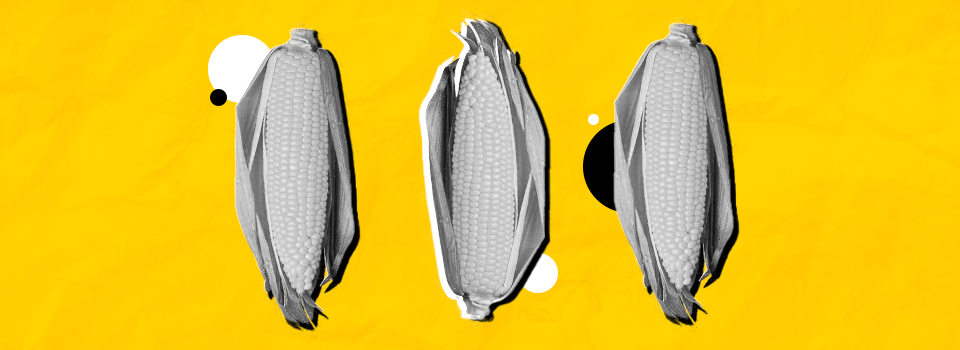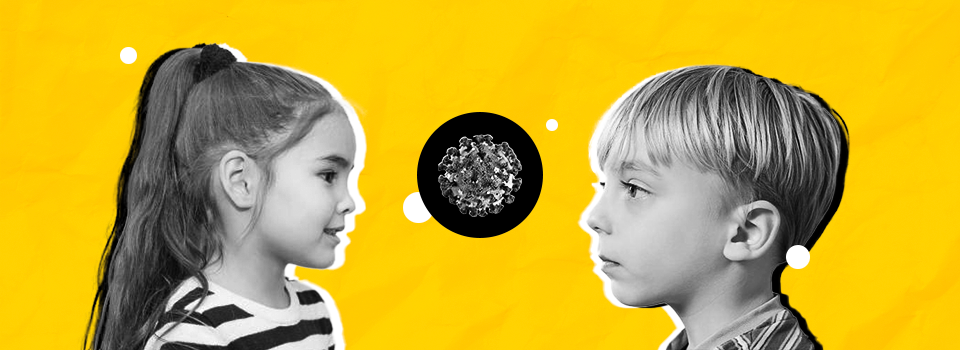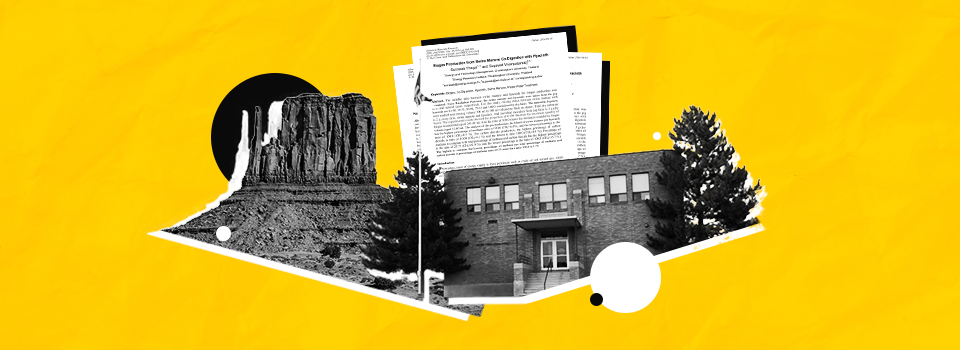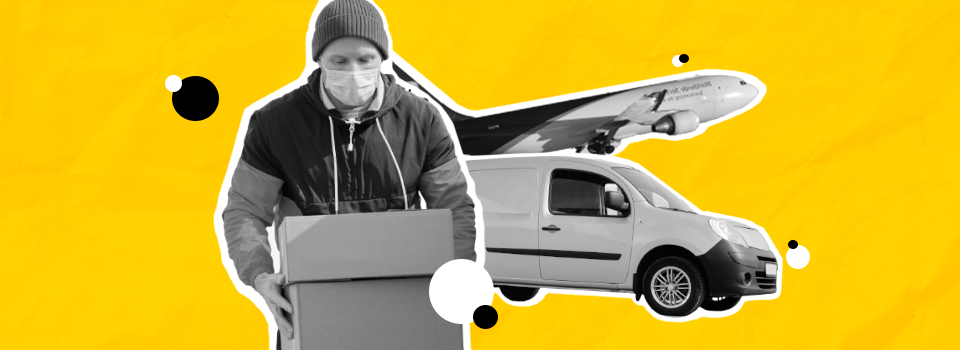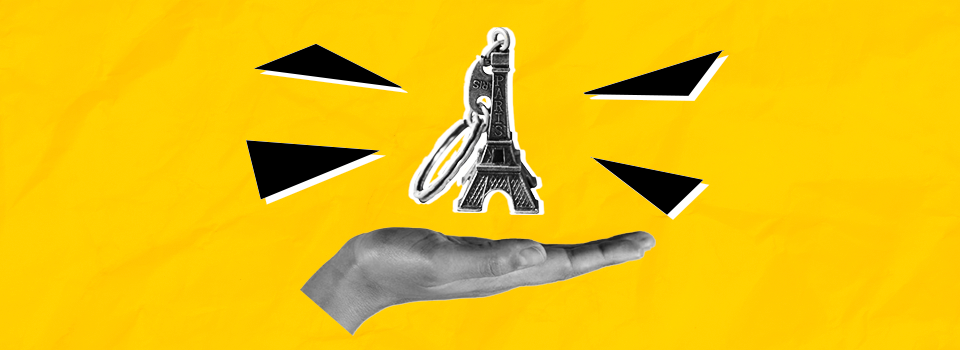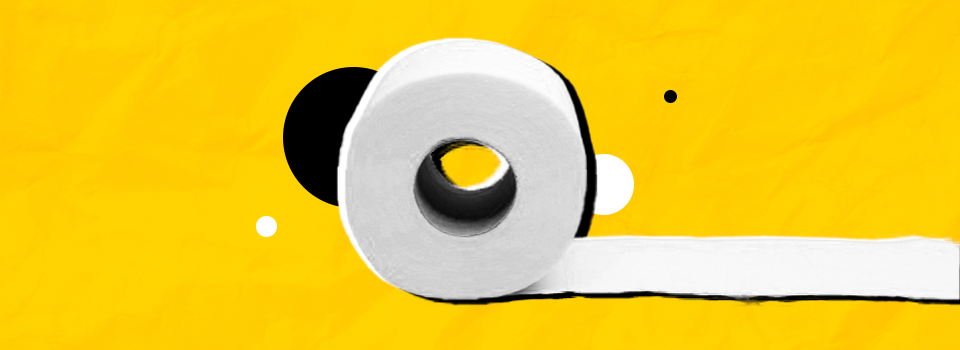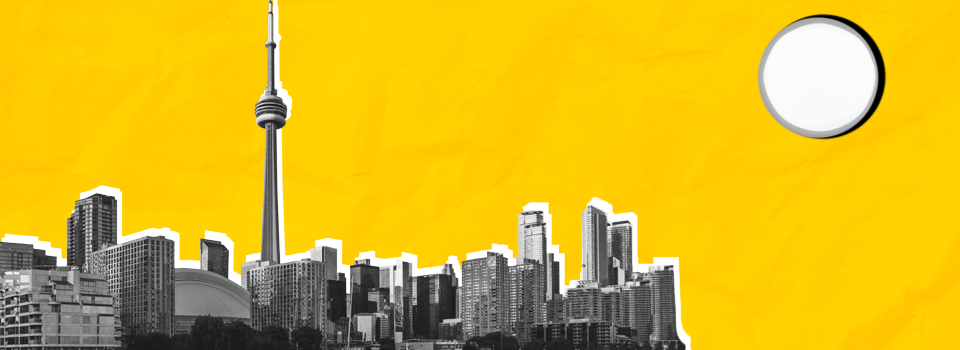What COVID-19 means for the future of scholarly research
10 researchers from across disciplines at ASU on how the pandemic will affect work in their fields going forward
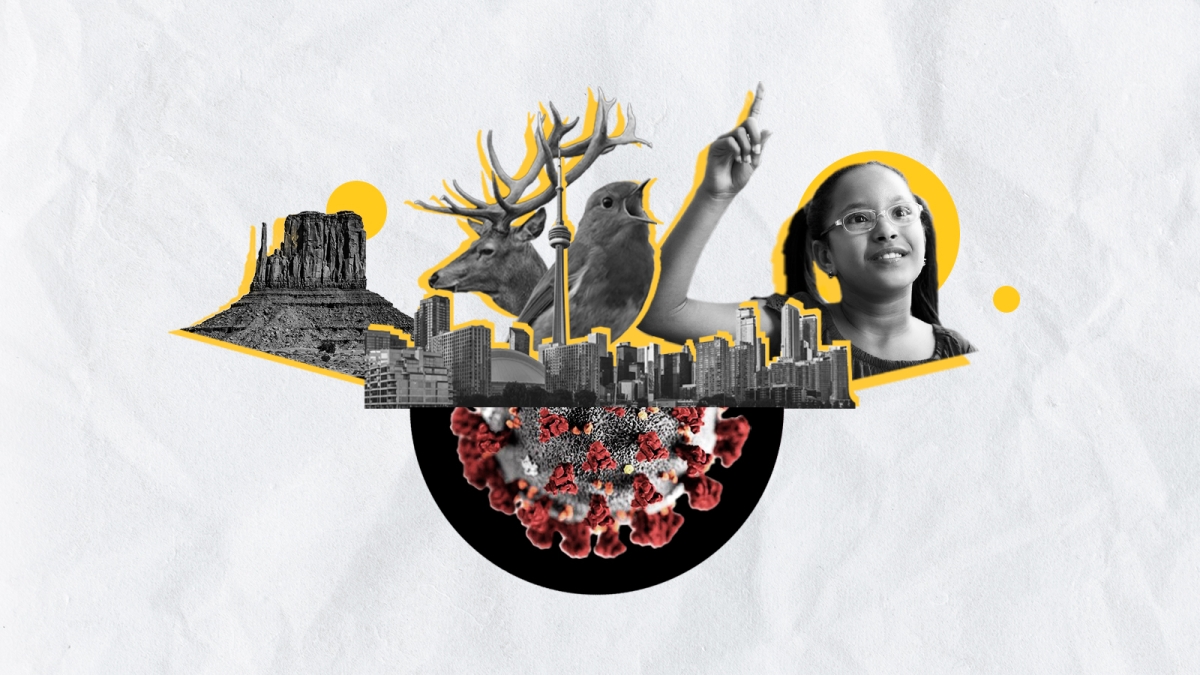
Editor’s note: This story is featured in the 2021 year in review.
The COVID-19 pandemic has been a globally disruptive force to our human systems for over a year.
Scholars have already begun researching the effects of the catastrophe as it’s unfolding. But what will that inquiry look like in five years, or a few decades from now? How will researchers measure the shock to and resilience of society?
Some researchers focus their careers on a single disaster. Hurricane Katrina provided a wealth of information for scholars of population mobility and, years later, on housing policy. Scholars of the Great Depression have charted the effects of monetary policy and labor practices. All of which comes down to: How were people affected? And what did they do?
ASU News interviewed several experts across Arizona State University on the questions they think researchers will be asking about the COVID-19 pandemic in the next few years and beyond. Here’s what they said.
Editor's note: Some answers edited for length and clarity.
Agribusiness
Tim Richards is the Morrison Chair of Agribusiness in the W. P. Carey School of Business.
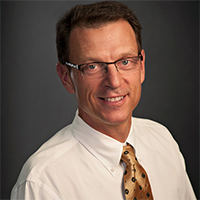
Question: With the pandemic as the background, what do you think the experts in your field will be doing research on in five years?
Answer: The shorter term for us is less than five years. Five years is the long term because things move so fast in ag supply chains. Firms will have adjusted by then.
We’ve been scrambling all year, in my own research and as co-editor of the flagship American Journal of Agricultural Economics, taking manuscripts all the time dealing with the resilience of the supply chain. How are suppliers responding? How are consumers responding? What are the shocks?
The thing about food is that people eat it every day. It’s not hypothetical to what’s happening.
Food retailers have to adapt to shifts they see coming down the pike in the next two weeks. Summer is long range.
Five years out, the big things we’ll be talking about is how prepared we are for the next pandemic and how to set up supply chains to absorb the next shock.
And how will behavior change as a result of COVID? Will people spend more time in the house and cook more and depend less on food service?
Q: What kind of data and trends will researchers in your field be looking at in 20 years?
A: In the longer term, climate change will be the dominant issue.
Q: What research that is happening now in your field, apart from your own, do you find most exciting?
A: It’s super interesting all across the map.
At the journal, we have four main editors who deal with different parts of ag economics in general. Mark (Manfredo, professor of agribusiness) and I do more supply-chain agribusiness. We had a special issue and called for manuscripts. Our deadline was Sept. 1 and we received 80 on that day.
I had to take 60 of them because they were all on supply chains and food markets and consumer behavior. There are implications for environmental economics and sustainable food supplies.
By far the most were on food prices, food consumption patterns, business failures (and) food waste.
Social work
Elizabeth Anthony is an associate professor in the School of Social Work in the Watts College of Public Service and Community Solutions.
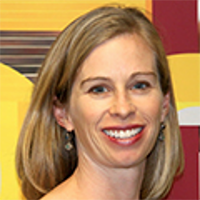
Question: With the pandemic as the background, what do you think the experts in your field will be doing research on in five years?
Answer: There are so many things to study, it is hard to focus on just one or two. In child development, researchers will want to know how the pandemic has impacted social interactions in particular. Are kids more or less able to relate socially to their peers as a consequence of so much time at a distance? Of course, the other issue will be about academics and the academic divide; some children have really thrived in the virtual school environment while others have struggled significantly. One of the most important questions will be how are children differentially impacted and how has the pandemic highlighted the racial and economic inequities for children. Another fascinating question is how children will report their own experiences of the pandemic — mask wearing, missing major events, attending virtual gatherings, going to remote funerals and weddings, etc.
Q: What kind of data and trends will researchers in your field be looking at in 20 years?
A: Racial/ethnic, academic, economic and health disparities will all be tracked in relationship to the aftermath of the dual pandemics of COVID and racism in America.
Q: What research that is happening now in your field, apart from your own, do you find most exciting?
A: I am fascinated by the work of Indigenous scholars who are examining the concept of community thriving and joy in the midst of grief and hardship.
Q: There are people who make careers out of studying major events like the Great Depression or Hurricane Katrina. If you were a current doctoral candidate in your field, what about COVID-19 would inspire your thesis?
A: I would conduct an exploratory mixed methods study examining how children experienced the pandemic. I would use qualitative interview methods to have the children share their distinct perspectives. Adults think we know what children are thinking, but there is an entire unexplored universe in the minds of the children of the pandemic.
Q: How has the pandemic affected your current research?
A: The pandemic has made me keenly aware of what is meaningful and important research. Now, more than ever, we need research that makes a difference in the lives of children and families. I am doing more public and community work than ever since the need in our communities is so great. And my scholarship is sharply focused on work that can have a positive impact for our most vulnerable children.
Indigenous studies
Bryan McKinley Jones Brayboy is a President’s Professor, director of the Center for Indian Education and ASU’s special adviser to the president on American Indian affairs.
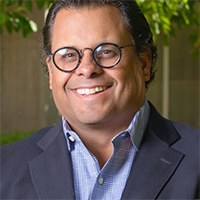
Question: With the pandemic as the background, what do you think the experts in your field will be doing research on in five years?
Answer: I work at the intersections of education, anthropology and Indigenous studies. I’ll try to address this from the perspective of Indigenous education, but it will — by necessity — be broader than that.
Indigenous education scholars, and those in the field of educational anthropology, will likely be interested in a few things in the coming years. There will likely be a retrospective review of the impact of COVID-19 closing down in-person classes for young people. There will be an exploration of infrastructural issues that include broadband and other technological — and related access to broadband and hardware — concerns, but also an exploration of the physical structures of school buildings. In a 2015 Inspector General Report on Indigenous schools and schooling, the role of the physical space limiting positive and productive academic achievement for American Indian children raised concerns for many of us. How has learning from home changed or amplified that concern is something that will likely be explored.
I also suspect that there will be an examination of what the learning outcomes and adaptations — by students, parents/families, teachers and administrators — were when schools were largely closed. For those schools that have been opened, I think there will be studies guided by asking questions about the long-term socio-emotional impact on children who were forced to be socially distant.
Q: What kind of data and trends will researchers in your field be looking at in 20 years?
A: There will be a real interest in transdisciplinary and transfield research focused on the well-being of schoolchildren and communities. The intersections between the impact of the pandemics of global climate change, health care and racism will still be of interest, but in ways where there is an overlap and intersectional views of the challenges rooted in the imbrication of these pandemics. The confluence of these pandemics will be well-documented and there will be serious engagement with finding ways to further document and address how they move together.
And, there will be exciting new research on the impact of tribes taking over their schools. To date, most schools serving Native children on reservations are run and operated by the federal government and the Bureau of Indian Education. Tribal nations and communities are beginning to build capacity to assume daily operations and staffing of the schools. There will be a decade of data and experiences to explore in the area that will be worth exploring.
Q: There are people who make careers out of studying major events like the Great Depression or Hurricane Katrina. If you were a current doctoral candidate in your field, what about COVID-19 would inspire your thesis?
A: What a time to be engaged in, by, and through the world around us. I would write about the intersections between the health, climate, economic and race pandemics and their interconnectedness. COVID allows an opportunity to have an honest dialogue about how these issues wrap together. As such, I think new work would offer ways to bring systemic and systems analysis to the breadth of these challenges. There have to be multiple lenses on the current moment that illuminate the rhizomic nature of a challenge that has been framed as singular, rather than the complex, multilayered one that it is.
Q: How has the pandemic affected your current research?
A: My research is relational. I talk to people. I visit with them. Eat with them. Share stories and make connections. It is intimate and sensual — we use our senses. Some of this can be done online and via Zoom, but some of it requires face-to-face engagements. So, I have been limited in new work.
But, there have been some interesting opportunities emerge. In the lockdown, I’ve shifted my focus to building international, intergenerational responses to the current challenges. Since February of 2020, I’ve led weekly conversations with Indigenous scholars in New Zealand, Hawaii, California, Illinois and New Mexico where think seriously about how Indigenous knowledge systems may help us better understand the intersecting pandemics. … These gatherings have forced me to listen, marinate, facilitate and learn from really different people. As a result, there are a whole new set of emerging questions to explore in my thinking and research.
Supply chain
Hitendra Chaturvedi is a supply chain management professor of practice with the W. P. Carey School of Business.
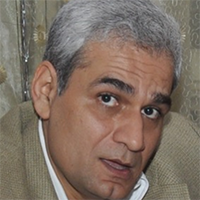
Question: What are your predictions for the future of contactless shopping and delivery? Will consumers continue to prefer shopping that way even when in-person shopping becomes safe again?
Answer: There were/are believers in online shopping and there were/are believers in in-person shopping, and historically, it has been mostly a generational thing. Just like working from home was perceived to be less productive before COVID-19 and now that we are forced to work from home due to COVID, even naysayers are realizing that it does not impact productivity; the online naysayers — mostly baby boomers — are turning into converts. My prediction is that in-person shopping will become safe but it would have lost a lot of its hardcore believers to online, and the numbers this past holiday season are testament to that shift.
The biggest change that online shopping has done is commoditize the “shopping experience,” which means we do not have to dress up and drive for our shopping need. Shopping is not an event anymore. Shopping is just like going to the kitchen and refilling our cup of coffee. With this move, holiday season is not only limited to two weeks when malls are decked up, but spread over two months, with many Black Fridays and other special days. Online shopping is here to stay, and you will see technology like artificial intelligence try to bridge the experience gap between in-person experience and online experience. … In-person will evolve with a new purpose while online experience will try to become more personal through the use of oodles of data and technology.
Q: With the pandemic as the background, what else do you think the experts in your field will be doing research on in five years?
A: Three key areas: 1) The role of intelligent technology to make virtual shopping feel like an in-person experience. 2) The role of technology and supply chain management to delivery products in “near real time.” This will include drones and robotic delivery platforms. 3) Circular economy issues related to meteoric rise in contactless shopping, including how to proactively plan for returns and waste management.
Q: What kind of data and trends will researchers in your field be looking at in 20 years?
A: Twenty years is way out, but over the next 10 years, there are three big areas: 1) Individual “customer lifecycle management,” because unlike the “old” way, where we created and marketed to customer segments by demographics — race, age, location, etc. — we will become a customer segment of “one.” Microscopic data of our likes, preferences, age, gender, partners, kids, etc. all will be cross-referenced, dissected, mined, manipulated and monetized by intelligent algorithms run on some very powerful machines. 2) Privacy concerns in the age of intelligent machines. 3) End-to-end product life cycle management for each product and how to build the best circular economy model as we strive toward a sustainable economy. Material trends to create products that contribute to an economically viable, sustainable circular business model.
Q: What research that is happening now in your field, apart from your own, do you find most exciting?
A: Robotic process automation where a bridge is being created between biology and technology, including bio-bots, self-aware robots and artificial intelligence. Robots of the future made out of living cells rather than metal, plastic, gears and motors just fascinates me.
Q: There are people who make careers out of studying major events like the Great Depression or Hurricane Katrina. If you were a current doctoral candidate in your field, what about COVID-19 would inspire your thesis?
A: Not sure about a thesis, but a couple of book title comes to mind: ”The Fragility of it All,” or “Revenge of the Bat,” or “The Bat Effect” – a twist on the famous book and movie “The Butterfly Effect.”
Q: How has the pandemic affected your current research?
A: Everyone can pontificate and we, as professors, are best at it! There is no substitute in good research for “real world” experience: to be in the field, to sense, to touch and feel, and immerse in experiences that make the data real, which, unfortunately, we cannot do while sitting at home or in an office, just analyzing reams and reams of data.
Ecology
Sharon Hall is a professor and an ecosystem scientist with the School of Life Sciences.
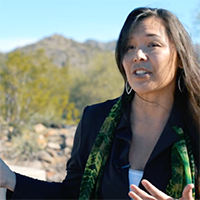
Question: With the pandemic as the background, what do you think the experts in your field will be doing research on in five years?
Answer: One of the really interesting things that's been happening in ecological sciences is thinking about what this "Anthropause" means for people in the planet. And when I say Anthropause, I'm thinking about the time when we all stopped traveling and cars were not on the road. Planes were not in the air for long periods of time. One of the first questions that we thought is, "How does this pause in anthropogenic activities affect our planet and the ecosystems that we're living in?" We expected to see some changes rapidly, like air quality. We saw lots of media articles about how pollution is better in Los Angeles. "You can see the mountains for the first time," for instance. But what's really quite interesting is the places where we didn't see a change. … That highlighted the complexity and the tangling of the different types of anthropogenic activities and ecosystem response. … Why wasn't there a change between March and April when things were really locked down? And we're trying to figure that out.
I think the value of these long-term data and these agencies and the partnerships with ASU is to look at the trends over weeks, months, years, and really to try and see this very small signal in a lot of noise. I think that's the challenge. And so without these sensors that are out there in the environment — not only just air quality sensors, but we've got cameras out in the environment, wildlife cameras looking for patterns and wildlife — without these sensors, essentially helping us look at these long-term patterns, it's hard to see this little signal. I think that the Anthropause will be little in terms of the signal in some areas. And there are other areas, for example, like in terms of the social system, it's going to be an enormous signal. But for the environment, I think it's much more complex than, than we like to give it credit for.
Q: What kind of data and trends will researchers in your field be looking at in 20 years?
A: One of the things I think that's most interesting is the attention on the links between human health and ecosystem health. I think that the COVID pandemic has really brought that into relief. We've known this for a long time, but it's been really under the radar. The idea that ecosystems when they are intact or less degraded have inherent feedbacks and complexities that prevents transmission of viruses and pathogens between people and the animals and other organisms that live in those ecosystems. And when we're breaking apart these ecosystems or we're going in and harvesting, we're getting animals and other organisms closer to people. There's a lot of transmission that occurs. And I think that we've known this for a long time, but you know, sometimes it takes a pandemic for us to get on board and see what's right in front of us.
Q: What research that is happening now in your field, apart from your own, do you find most exciting?
A: I am most excited right now in the renewed look at the environmental movement, the conservation movement, and looking at why it's continued to be so white. It's perceived to be so privileged in that way that when you look at environmental organizations, they tend to be demographically very skewed. And in my opinion, the pandemic and the events of the summer have really put a focus on what are the institutions that we have, what are these organizations and movements that we have that haven't been equitable. If we want to preserve the environment, we've got to get everybody on board. And how do you get everyone on board when there's only a handful, a group of people that feel comfortable in the outdoors? I find it my life's mission to tackle that question and try to get kids of all backgrounds comfortable in the outdoors and be able to receive the benefits from nature.
Q: There are people who make careers out of studying major events like the Great Depression or Hurricane Katrina. If you were a current doctoral candidate in your field, what about COVID-19 would inspire your thesis?
A: I think that links between human health and ecosystem health is key. I mean, that's kind of a cool question too, because that gets you all the way from the global level, like looking at patterns of large-scale anthropogenic activities like deforestation all the way down to the molecular level, thinking about viruses. So that's very cool cross-scale sort of questions I think would be a great thesis or for a lifetime of work. The third thing I was thinking about is thinking about this Anthropause. If there were a period in the future where people exit some ecosystems, whether it's from climate migration or whatever, how can we restore those ecosystems back to a place that can support the original community of life that lived there? … We've seen that potentially there are some of our activities are reversible. How reversible are they and how long will it take? What will grow in its place? These are all good questions.
Tourism
Gyan Nyaupane is the interim associate dean of research for the Watts College of Public Service and Community Solutions and a professor in the School of Community Resources and Development.
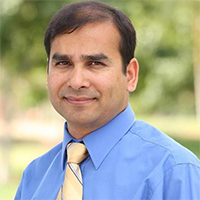
Question: With the pandemic as the background, what do you think the experts in your field will be doing research on in five years?
Answer: I research tourism and its relationship with the environment and its relationship with culture. Tourism was one of the areas hardest hit by the pandemic. Probably, tourism was one of the first industries impacted and will probably be the last one to revive.
The United Nations World Tourism Organization put together data showing that tourism dropped by 74% in 2020 compared to 2019. The question I’m asking myself is, if one event can crush the industry, how can we make the industry more resilient?
The next question would be how to make tourism more sustainable at the destination level. Tourism is impacting small communities in a big way. When the pandemic hit, everything shut down, the borders were closed, planes were grounded and then people started going to public lands and parks. These parks were extremely crowded and some of them had to be closed because they couldn’t handle it. That’s what we’re trying to understand.
And the biggest question we are all wondering is how this will impact human behavior. Will people still travel and how will they travel and what are they concerned with?
We’re seeing some trends already. Tourism has the human touch. You’re served by waiters and greeted by people. I think that will be digitized and accelerate the process of technology faster than usual.
I think we’ll see people be more mindful of the pandemic when they travel. They will probably pause and think about themselves, the environment and about others before they travel. There might be some kind of consciousness that comes out of this.
Q: What kind of data and trends will researchers in your field be looking at in 20 years?
A: The next few years will be very pandemic-focused, with a focus on how to revive. In 20 years, the pandemic will be one factor but there are many other factors in tourism already.
When you look at tourism beyond the pandemic, there’s climate change – an issue for island destinations and the Himalayas.
There’s technology. People have started traveling to space, which is very expensive and exclusive. There are two types of space tourism. One is going into space and spending a few days going around in orbit. And then there’s a quick shuttle to go into space, feel zero gravity and come back in an hour or so. I think that will happen in our lifetime. I think it will go from $20 million to $30,000 or $50,000 within the next 20 years.
Another thing in the next 20 years will be social priorities. Travel used to be one way – people from the global north, North America and Europe, traveling to the global south. I think we’ll see two-way traffic going on because the middle class is growing in Asia and South America.
Q: There are people who make careers out of studying major events like the Great Depression or Hurricane Katrina. If you were a current doctoral candidate in your field, what about COVID-19 would inspire your thesis?
A: One thing I would look at is how we can adapt our research. I have a doctoral student who is supposed to do research in the field but can’t because of travel restrictions. Most of the time students think, "This is what I’ll do," and there is no Plan B. It’s a methodological point of view. But what happens if there is a tsunami or a pandemic?
A second question is, people think a pandemic is a big event, and it’s very impactful, but this is a short-term event. Research on resilience should be much bigger than focusing on the pandemic.
Tourism will be impacted by several other factors — climate change, technology, man-made disasters, social change. I would be looking at the pandemic as just one factor, not the factor.
Q: How has the pandemic affected your current research?
A: I had plans to go to Nepal in the summer and do research on this very topic, the resiliency of communities. Things happen; there’s a flood or an earthquake. And some communities overcome these challenges quickly and some can’t. What makes one community more resilient?
I also study tourism in Indigenous communities. I’ve been working with the Navajo Nation, helping with public lands planning, and I’ve not been able to go since last year.
I was also planning to go to Taiwan to do research on coral reefs and how they are impacted by tourism. They’re very popular among tourists, with scuba diving and all sorts of things. I was collaborating with some colleagues in Taiwan and I couldn’t.
But the pandemic has also been productive. I was able to spend time writing a book.
One interesting thing is how people share their knowledge. With everything virtual, you can organize a conference without paying anything. I was planning to go to Nepal and instead I started doing webinars, connecting with people in the industry every month on a different issue. It’s grown and I’ve established this network because of the pandemic.
Some of the other faculty in my school and I also did a pandemic study in Arizona. We invited people from the industry, public health experts, agencies who work in tourism, and people inside and outside of ASU. We looked at scenario planning, how tourism would look in a year or two or three. Even with the vaccine, there’s a lot of uncertainty.
We came up with four scenarios, and it was great to put that together in a report and share it with our partners.
Education
Punya Mishra is the associate dean of scholarship and innovation and professor in the division of educational leadership and innovation at Mary Lou Fulton Teachers College.
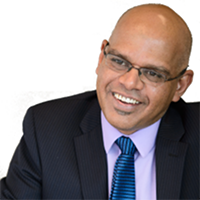
Question: With the pandemic as the background, what do you think the experts in your field will be doing research on in five years?
Answer: The UNESCO website that tracks the educational disruption due to COVID-19 showed that, in a mere 45 days, starting in mid-February, schools in over 180 countries shut their doors, affecting the education of 1.5 billion learners. Suddenly, the entire world was conducting a global, educational social experiment that continues to this day. People who study such disruptions are not surprised by the first major effects we are seeing.
First, in education as in much else, the pandemic has hurt the disadvantaged more than it has the privileged. The virus has laid bare the equity gaps in education and lots of underlying problems in our society, especially the equity gaps, in wealth, access to health care and education.
Second, the pandemic has accelerated and intensified some preexisting trends. Over the past few years, we have seen an increase in technology use in learning, particularly the growth of distance education. This pandemic, and the need for remote schooling, has really brought educational technology to the forefront. And that will likely persist after the pandemic ends. This does not mean that most instances of remote learning were successful. Millions of parents and kids can tell you that sitting in front of Zoom does not imply learning. But at another level, the genie is out of the bottle.
So researchers will have to contend with the fallout from these things. They will have to broaden the aperture through which they look at educational equity. And they will have to look closely at technology, at the equity dimensions of technology as well as at issues of pedagogical practice — how we teach, and learning outcomes — how we evaluate what we teach. …
Finally, I hope that this pandemic will allow us to revisit the role that schools play in our society and how we evaluate their success. We usually evaluate schools based on students' success and learning through standardized tests. But the crisis made clear that schools are more than just spaces where students go to learn. These are spaces for socio-emotional development, of growth of character and identity. And let us not forget the economic role that schools play — not just in terms of the future but a more immediate one. Schools, by providing safe spaces for the young to engage, interact, learn and grow, allow for parents to keep the economy running. Thus the role that schools play in our ecology is incredibly complicated but we measure their success only on single measures. I hope that the COVID-19 crisis allows us to rethink and reevaluate the role that schools play in our lives and in our communities.
Q: What kind of data and trends will researchers in your field be looking at in 20 years?
A: As the science fiction author, William Gibson said, “The future is already here — it is just not very evenly distributed.”
The learning profile for a migrant child from Syria is going to be different from the learning profile of an inner-city kid in Chicago, or someone growing up in Mesa, Arizona.
Education is always contextual. It is a rich complex domain that will always feature multiple perspectives and approaches. So the kinds of data that education researchers will look at will be determined by a variety of contexts (Syria or Chicago, wealthy or underserved areas, etc.) and by a range of disciplines (history, philosophy, learning science and much more). This data will be qualitative and quantitative. And, as I mentioned above, there will be a lot of it. The more interesting question, perhaps, is not what kinds of data we will look at but rather, it will be what, given the expected growth of AI and machine learning and the asymmetries of who has access to data, the ethical rules of the road for capturing who owns the data, the conclusions we draw from it and how it is used.
Q: What research that is happening now in your field, apart from your own, do you find most exciting?
A: I love this question because one of the things that I do in my work is that I think a lot about what we call the “adjacent possible.” The only way to explain it is with an analogy. One can argue that one of the most significant technological advances was the advent of the printing press. It allowed for mass literacy, and in some ways our educational system is built around the “book.”
What many people don’t know is that one of the side effects of the advent of print is that many people realized they had bad eyesight. That had not been an issue because masses of people had not previously had to peer at small print on a page by candlelight before. Within decades after the invention of the printing press, lens makers were making spectacles. It was a booming business across Europe and led to people playing with lenses. And that play with pieces of polished glass led to the invention of the microscope and the telescope. And suddenly the infinities of the very small and the very large became revealed to us and transformed how we looked at the world and our place in it. This is the adjacent possible.
So, I wonder not just about the impact of new educational tools and technologies but also about inventions and technologies that at least on the surface do not have a direct impact on education but in other ways can dramatically transform it. And of course this is really hard to predict. For instance, I think about something like CRISPR and I wonder what that could mean for the future and its impact on learning. I look at the advent of AI and what it means for the jobs of the future.
I do think this is a provocative question, but one we must approach with a great deal of humility. The history of education is littered with examples of technologies that were supposed to transform education but didn’t. But I think as educators we should be always looking outside of education for disruptions and transformation.
Q: There are people who make careers out of studying major events, like the great depression or Hurricane Katrina. If you were a current doctoral candidate in your field, what about COVID-19 would inspire your thesis?
A: If I were a doctoral student in education at this time, I would focus on issues of institutional resilience. I say this because over the past months it has been interesting to see how different educational organizations (schools, districts, higher ed institutions) both within the U.S. and internationally responded to the pandemic.
Q: How has the pandemic affected your current research?
A: In my role as associate dean of scholarship and innovation I get to work with faculty across the college supporting them in their research. I see three different responses. For one group, those who work with existing data sets, in economics of education, or those who study the history of education, nothing much has changed. Their work continues relatively unimpeded.
For those working in the space of educational technology, in some ways, this disruption has been a bonanza. Their field is now at the center of the action. They are in high demand and rightfully so.
Finally, there are scholars whose work is dependent on being in the classroom, observing teachers and students, working with Native American populations, or migrant learners. The pandemic has completely disrupted their work.
Consumer behavior
Lauren Chenarides is an assistant professor in the Morrison School of Agribusiness.
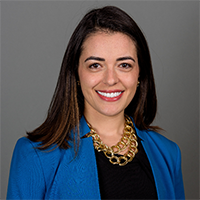
Question: Everyone knows about the toilet paper and hand sanitizer. Did people actually hoard food, and what is responsible for hoarding?
Answer: In economics, the way to get around hoarding is to let the markets work. The worst thing is to pass price-gouging legislation.
Let companies do what they want and consumers will be restrained in their behavior. If Fry’s had charged five times the price of pasta in April, there would have been less hoarding.
It sounds horrible, but it’s how the markets work.
Q: There are people who have made careers out of studying major events like the Great Depression or Hurricane Katrina. If you were a current doctoral candidate in your field, what about the COVID-19 pandemic would inspire your thesis?
A: There’s going to be a lot. What drives doctoral dissertations in economics, especially empirical economics, which is testing theories and examining behavior, is data availability.
There are data sets that are somewhat real-time, tracking cell phones. We know they went to Costco but what did they buy? How much did they spend?
That data will start trickling out in 2021, 2022, and the really impactful stuff that people will derive from this will be over the next two, three or four years. There will be whole careers made on this … but a lot of the research won’t be directly COVID-related. It’s an example of a larger set of issues that hit markets and shed light on deeper human behavior, like hoarding.
A lot of research deals with hurricanes or earthquakes, and I think we’re realizing this is another in a sequence of events we poorly understood in the past.
Q: Has the pandemic affected your current research?
A: My major stream over the last five or six years is the (agriculture) labor market shortage. It’s the biggest problem for farmers in Arizona and California, the food basket of the U.S.
They need workers. You have to have hundreds, sometimes thousands, of people, depending on the skill of the operation.
There was a real concern in March and April about whether the harvest would even happen. Could they bring in workers from Mexico? How could they guarantee their safety? Would they be allowed out of fear of bringing COVID from Mexico? To say it turned out fine would be an overstatement. They managed to get enough workers to get it done, but at the expense of a lot of safety concerns.
Everyone knows about the meat-packing issues in the Midwest, where they were nodes for spreading the pandemic.
At the end of the day, in terms of access to labor and the ability of the food supply chain to supply food, it made do.
It’s opened up a whole new area in terms of supply chain resilience. It’s really exposed to me as a researcher that we didn’t care much before. We have a super-efficient food production system in the U.S., and we found out its resilience has real limits.
There were four or five weeks where there was a shock to the system that we didn’t think could happen.
Urban climate
Matei Georgescu is an associate professor in the School of Geographical Sciences and Urban Planning.
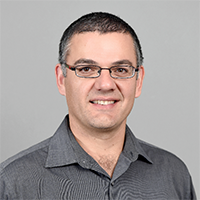
Question: With the pandemic as the background, what do you think the experts in your field will be doing research on in five years?
Answer: Experts in the field of urban climate are focused on two very broad themes. The first relies on getting out in the field to undertake observational measurements. Given lockdowns and generally reduced activity, I think the reduction in such observational campaigns will spur much greater activity in the observational realm in the future. These observations inform many of the numerical modeling activities that my group and others using similar computing-based tools rely on to ensure their models work well. The second involves a broader view of how our cities should be built. The community has been thinking about this topic for many years, but perhaps not with the same sense of urgency and not with the same sense of realism to tradeoffs, both social and physical, as we are confronted with now.
Q: What kind of data and trends will researchers in your field be looking at in 20 years?
A: The advent of AI will continue to be leveraged in ways that advance our field immensely. For example, in my field, we utilize a "first principles" type of approach when examining simulation output. This has led to exciting advances, including quantification of projected urban-induced temperature changes relative to temperature changes due to greenhouse gas emissions across future U.S. cities. However, such a systematic approach also has the potential to be limiting. For example, the climate system is inherently nonlinear, and discovery of patterns and feedbacks not immediately visible to us through standard methodological approaches may be possible using advanced algorithms. Utility of AI is already pushing the frontiers of our field in many ways, but the possibilities by which such techniques may benefit our science, and society, in the future is exciting.
Q: What research that is happening now in your field, apart from your own, do you find most exciting?
A: There is very little research that I do not find interesting (laughs).
Q: There are people who make careers out of studying major events like the Great Depression or Hurricane Katrina. If you were a current doctoral candidate in your field, what about COVID-19 would inspire your thesis?
A: Perhaps not in my field: The social modifications associated with adjusting to a COVID-19 world have been extensive. I would be very intrigued in posing the appropriate questions to obtain a better sense of how this adjustment, i.e., people living and working in this new world, has varied for different populations, demographics; indeed, how some have actually thrived under such conditions and getting a sense for the impetus responsible for their success. So, perhaps I may change my field.
Q: How has the pandemic affected your current research?
A: The pandemic has created a paradigm shift when it comes to time management. Raising young children during this time, all while Zooming; preparing proposals; preparing, developing and delivering classes; ensuring student needs are appropriately met and maintaining strong research advancement has been challenging, but also rewarding. Because of the pandemic forcing lifestyle changes, it has forced me to look within myself and get a sense for how I can improve, how I can become more efficient, how I can be more understanding and grateful for those things that I may take for granted. It has been, in many ways, a forced period of reflection, both professionally and personally, which is always beneficial.
Environment
Heather Bateman is an associate professor in the College of Integrative Sciences and Arts.
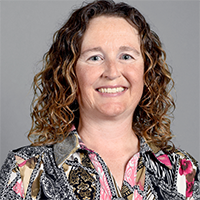
Question: With the pandemic as the background, what do you think the experts in your field will be doing research on in five years?
Answer: My background is in ecology and I study wildlife, so birds and herpetofauna are my expertise. A whole big suite of researchers have coined this the Anthropause. So we're living in the Anthropocene, which is this area of huge human influence. And the Anthropuase is the lockdown orders all over the world. This might affect wildlife in positive and negative ways. … Maybe people staying at home are spending time in their yard or spending time around their neighborhood, so maybe they're seeing wildlife and plants that they didn't formerly appreciate, beause they're just not taking that time to see it. I hope there's an appreciation for nature. A lot of people have tried to recreate and just find things to do during the pandemic. Here in Arizona our parks were just slammed. So lots of Forest Service lands were being used by the public and within Phoenix, a lot of the regional parks and mountain parks were very busy. And that's good — people connecting to nature. But it also might have human impacts on the resource. So natural resource managers might have new challenges that they hadn't before — just dealing with trash and having a lot of people on the landscape. Wildlife might be avoiding those areas a little bit more where there's a lot of human activity. So I think it can be a really mixed bag, you know, depending on how people are acting in different places.
Q: What kind of data and trends will researchers in your field be looking at in 20 years?
A: Wildlife, like many fields in science and ecology is becoming an area of big data. So there's a lot of sensors that researchers use. This could be everything from putting up acoustical loggers to record songbirds and frogs vocalizing to trail cameras recording a picture when an animal trips it. So we sort of sensored nature, right? And another field is looking at community source data. Sometimes this is referred to as citizen science — a more inclusive term though is community science. So this is where the public can engage and use their skills to identify plants and animals and record those within open source databases. Amateur ornithologists have contributed to that field for over a hundred years easily. So there's been Christmas bird counts and backyard bird counts, breeding bird surveys. But now with iNaturalist and eBird, there's a lot of community source data that's out there. And I think researchers are getting better at understanding how to use the data to ask research questions.
Q: What research that is happening now in your field, apart from your own, do you find most exciting?
A: I'm engaging with social scientists personally. I'm really excited about pairing how people feel about nature and their ideas about who belongs and what species belong in nature. There's several of us that are thinking about that. I don't mean to pass that off as my idea. But several of us have submitted a proposal to look at human-wildlife interactions in the city and also conduct social surveys of people. … As an ecologist, I think that's really interesting. I learn a lot from social scientists and I think it's important to think about people in any conservation plans we have.
Q: There are people who make careers out of studying major events like the Great Depression or Hurricane Katrina. If you were a current doctoral candidate in your field, what about COVID-19 would inspire your thesis?
A: So our proposal that we put in on human-wildlife interaction, we think that people acted differently during the pandemic, during these stay-at-home orders and recommendations, and that it increased their contact with wildlife and some people make decisions based on their beliefs. We've been working with a company that removes snakes from residential areas. And I think that human-snake interactions really increased during the lockdown. Sometimes when people see injured wildlife or they believe wildlife to be injured, they call wildlife rehabilitators. And so I'm guessing that all of that human wildlife interaction really increased during the pandemic. The trick of doing a dissertation or some type of research is having something to compare it to.
By partnering with a business that is removing snakes, I think this is an untapped data source that people haven't previously looked at. And it's probably the same for these rehabilitation centers. They may or may not have a close relationship with a researcher and maybe researchers just haven't engaged and reached out. But these community organizations and local businesses have a lot of knowledge about the natural world. … These entities have been overlooked just because they don't have a PhD. Our collaborators in the local businesses are just so impressive with their natural history knowledge. They have a lot to contribute. And we have a lot to learn from them.
Q: How has the pandemic affected your current research?
A: As a field biologist, I work outside. This summer we had a project trapping desert rodents across an urban heat island gradient. We kind of got a slow start. It was good that we had already had one year under our belt. So we were able to be out in the field together. We drove separate cars. We were masked in the field, so we were able to collect our data. The projects that we already had in the pipeline still moved forward. So I feel like I've been very fortunate in that. I feel like my research hasn't been very much impacted. It is tough to not see people but you know, "Zoom land," it works. And we were doing that before with some of these large collaborations; we have researchers in Massachusetts, Colorado. And so we're kind of used to that.
Written by Mary Beth Faller, Emma Greguska, Scott Seckel and Marshall Terrill of ASU News
More Health and medicine
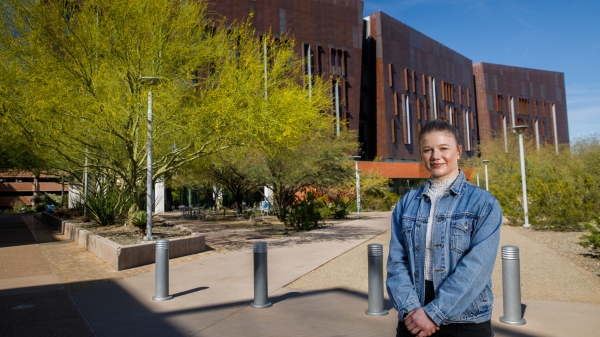
First exchange student for Biodesign Institute Europe bridges labs 5,000 miles apart
This spring semester, Grace Colley traveled to Arizona State University and became the first student to participate in the Biodesign Institute Europe student exchange program. In doing so, she helped…
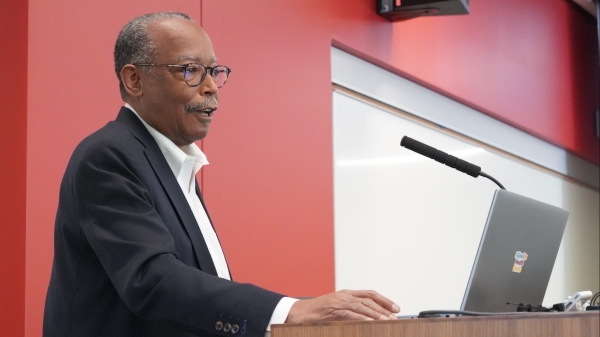
College of Health Solutions hosts visit from leading expert in genomic research
Some fortunate Arizona State University faculty, staff and students were able to gain valuable insights and perspective during a visit by one of the country’s leading figures in health and scientific…
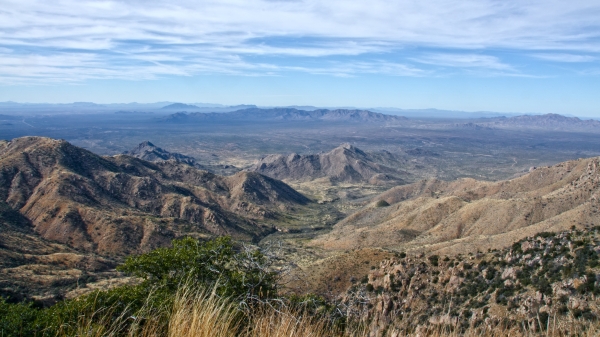
Indigenous ASU research team recommends assistance for tribal members still reeling from COVID-19’s effects
When Matt Ignacio’s tribe, the Tohono O’odham Nation, donated $1 million to Arizona State University to support COVID-19 research, he applied for some of the money to understand and report any…
